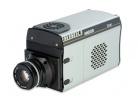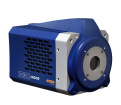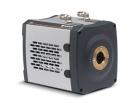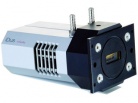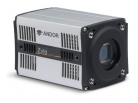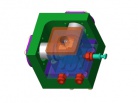Andor has introduced an innovation for ultrafast spectroscopy. New readout modes for sCMOS cameras allow to take advantage of their well-known strengths, i.e. high readout speed, sensitivity and dynamic range for spectroscopy. Thus, the Zyla and sCMOS iStarseries cameras can now be used for spectroscopy with extremely high spectral acquisition speeds. New readout modes include extensive pixel binning, extended dynamic range and multi-channel imaging(multi track) capabilities.
Speed overview table (number of spectra/s)
| Area of interest | Zyla 5.5 | Zyla 4.2 Plus | iStar sCMOS | |
| (width x height, pixel) | Rolling Shutter | Global Shutter | Rolling Shutter | Global Shutter |
| Any x 8 | 27 057 | 4 008 | 26 041 | 4 008 |
| arbitrary x 12 | 18 038 | 3 491 | 17 361 | 3 491 |
| arbitrary x 16 | 13 528 | 3 091 | 13 020 | 3 092 |
| arbitrary x 128 | 1 691 | 736 | 1 627 | 736 |
| arbitrary x 512 | 422 | 203 | 406 | 203 |
| arbitrary x 1024 | 208 | 102 | 200 | 102 |
| arbitrary x 2048 | 105 | 52 | 101 | 52 |
Asymmetric binning
The user can select any combination of vertical and horizontal binning for the selected area of the sCMOS chip. Hardware data processing in the camera creates spectral data which reduces the volume of data transferred to the PC.
Extended dynamic range
sCMOS cameras typically have a dynamic range of 12 or 16 bits. 16 bit is sufficient in the case of single pixel readout, however, when binning is used heavily, there is a significant increase in dynamic range in the connected pixels and 16 bit was limiting in such cases. For this reason, the dynamic range of the data transmitted to the computer was increased to 32 bits.
Multi track
To acquire several spectral channels at once, up to 256 tracks can be selected on the sensor. Any height and vertical position on the sensor can be selected for each track. Their position and size can thus be adapted to the position of the signal hitting the sensor.
